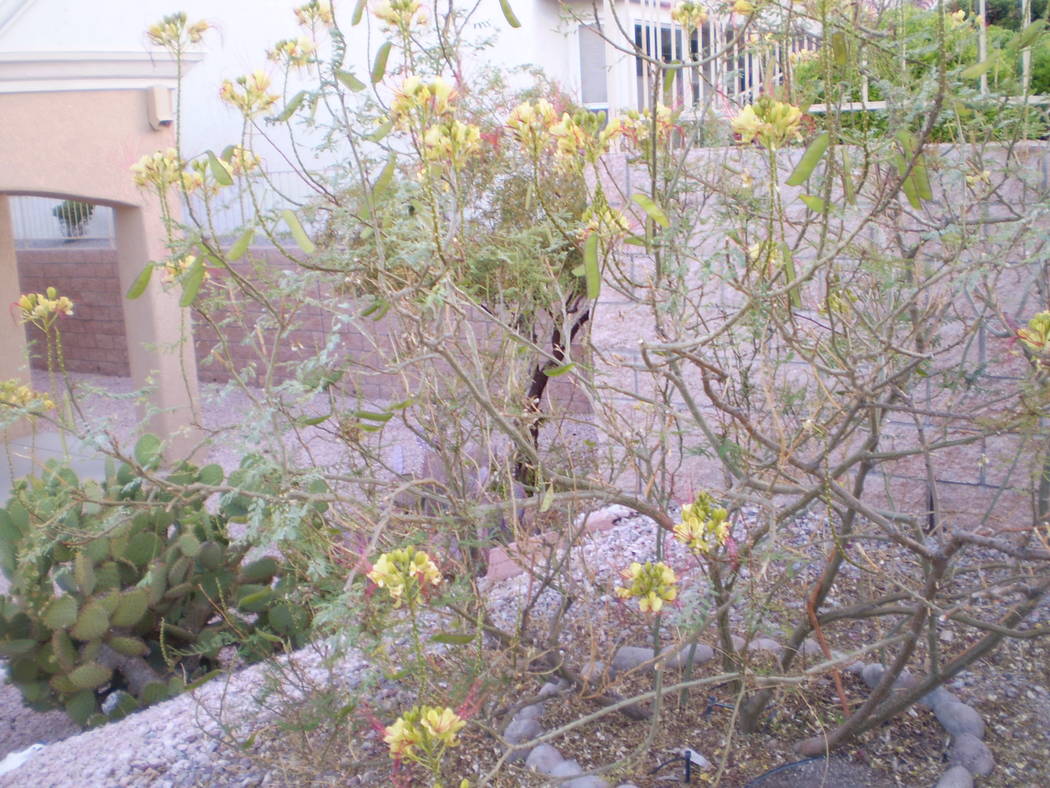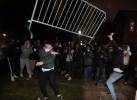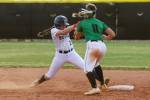Combination of water, fertilizer encourages the stem, leaf growth

Q: My Mexican bird of paradise grows well but it looks too thin. Or is that its natural way? I would like it to fill in and be healthy looking.
A: The leaves and stems look sparse to me from your picture. This is probably because it was not getting enough water, there is not enough nitrogen fertilizer present in the soil or the soil was not amended enough when planted.
The combination of water and fertilizer encourages the growth of more stems and leaves in most plants. There is no problem fertilizing plants during the heat of summer if the fertilizer stays at least 12 inches from the main stem and water is applied to the soil immediately after fertilizing.
You can also spray the leaves with liquid fertilizer now if it’s done early in the morning or near dusk when it’s cooler. Spraying the leaves with liquid fertilizer gets a faster result, but the effects don’t last as long. When spraying a liquid fertilizer, use distilled water and a spray adjuvant to help move the fertilizer inside the leaves.
Add another drip emitter or possibly two to give this plant more water each time it’s irrigated. Apply fertilizer just under the soil near the drip emitters but away from the stems. The fertilizer needs to dissolve in water so it can move toward the roots.
You can use fertilizer stakes pushed into the soil at the emitters. It’s less messy but a little bit costlier.
A rich compost full of nutrients, such as Viragrow’s compost, also can be used to fertilize the plants and amend the soil at the same time. Apply a rich compost in a circle about 12 inches from its base and water it in with a hose.
Q: I’m having a problem with the avocado, papaya, banana and mango trees growing in my yard. They cannot handle the direct sunlight from our desert sun. In direct sunlight, they burn and are significantly stressed. So, I planted them in light shade with only about three to four hours of morning sun. Bananas do best, but this year they have not fruited yet. The three to four hours of morning light apparently is not enough, but the heat is the killer.
A: The big problem for these plants during our summer is getting enough direct sunlight at cooler times of the day, amending the soil with good compost at the time of planting, covering the soil with a mulch that breaks down easily and keeping the plants out of strong winds. High temperatures, low humidity and soil salts are lesser problems.
These plants need at least six hours of direct sunlight every day for them to flower and produce fruit. Three to four hours is not enough. Bright, indirect sunlight also counts but contributes significantly less energy to the plant than direct sunlight.
I can’t tell you how many hours of indirect sunlight is enough because the intensity from this kind of light is variable. But the brighter, the better — provided it’s not direct.
The best light is during the morning hours from sunrise until about 11 a.m. or noon when the temperatures are cooler. After this time, filtered or indirect light supplements the light energy already received. Planting on the east side of buildings is important for plants sensitive to light intensity and the high temperatures of the hot desert.
Some plants have trouble producing fruit from flowers if the humidity drops below 30 percent. Others may have difficulty setting fruit at temperatures above 95 F. In both cases, you see flowers but no fruit. But high summer temperatures are usually not a problem for growing many tropical and subtropical fruit.
In the winter, when cold temperatures approach, the plants must be protected from freezing temperatures or put into a heated greenhouse or cold frame until dangers from cold weather have passed. Some tropical plants, like bananas, for instance, should be protected if temperatures drop below 45 F.
From my experience, growing plants that don’t belong in the desert is that you must create the best soil possible and continue to amend it every year. This might mean growing them in containers or raised beds. Plants growing in amended soils can handle much more environmental stress than plants growing in poor soils. Just like humans or animals, plants can handle the heat, high light intensity and low humidity easier when they are healthy.
My last advice is to grow these types of plants in protected locations and microclimates, away from strong winds.
A warning to readers: Growing subtropical and tropical plants here is not easy. It involves lots of work but also is fun and interesting to try.
Q: After reading your advice about the advantages of removing grass from around trees, I am making each well around my trees bigger. What is the best way to remove grass from around the trees? I pull out the grass when it’s wet and it seems to work the best.
A: Your technique works fine on our lawn grasses because they are primarily tall fescue. Tall fescue is a bunch grass and doesn’t send out “runners” like bluegrass does. It is easier to remove the soil from bunch grasses than from sod-forming grasses like bluegrass.
I dig a circle around the tree, about 4 to 5 feet in diameter and 6 inches deep, with a round-nosed shovel. I then remove the soil and grass, shake the soil from the grass back into the reservoir around the tree. Cutting a few roots with a sharp shovel will not hurt the tree.
I keep grass and weeds out of this well by pulling or hoeing as soon as I see them. Once a month I re-edge the circle around the tree to make it look nice. Line trimmers keep the grass cut at the right height. Don’t cut grass shorter than 2 inches or this short grass gets weedy.
Some people spray the area around trees with a weed killer or smother the grass in this area with old carpet cut in a circle. Flame weeders also work.
The reasons for removing or killing the grass around the tree are varied. This keeps mowers from nicking the trunk, line trimmers from whipping the trunk to death and reduces competition for water and fertilizer by the grass. Lawn grasses are water and nitrogen hogs.
Q: I have one tree out of 50 that is in bad shape. The rest of the trees look great. The leaves are turning yellow, then brown and underneath the veins are pink. Any ideas what could be happening with this one tree?
A: Trees that are planted too deeply in the soil, or have sunken after planting, can develop collar rot. Collar rot is when wet soil is in contact with the trunk just above the roots. This trunk will not tolerate wet soil against it for very long.
The trunk in contact with wet soil begins to rot and chokes the top of the tree. This results in leaf yellowing and leaf drop.
This is the reason I tell people to never dig planting holes for trees deeper than the container or the roots unless the soil has a big drainage problem. Planting holes that are dug too deeply frequently creates soils that sink, along with the tree. Soil falls against the trunk and causes collar rot.
Pull soil away from the trunk until you can see roots. Do not cover the roots with soil more than ½ inch deep.
Q: I just bought a pot of firecracker (Russelia) plant. Can I repot now?
A: It’s not the best time to repot a plant except cacti and succulents, but if you’re careful, you can do it during the summer months. Put the repotted plant in the shade for two to three weeks before subjecting it to full sun. This plant is considered a red flowering annual that attracts hummingbirds. This is not a desert plant, so don’t plant it directly in a desert landscape surrounded by rock. It likes moist locations with exposure facing the east.
Bob Morris is a horticulture expert and professor emeritus of the University of Nevada, Las Vegas. Visit his blog at xtremehorticulture.blogspot.com. Send questions to Extremehort@aol.com.



















